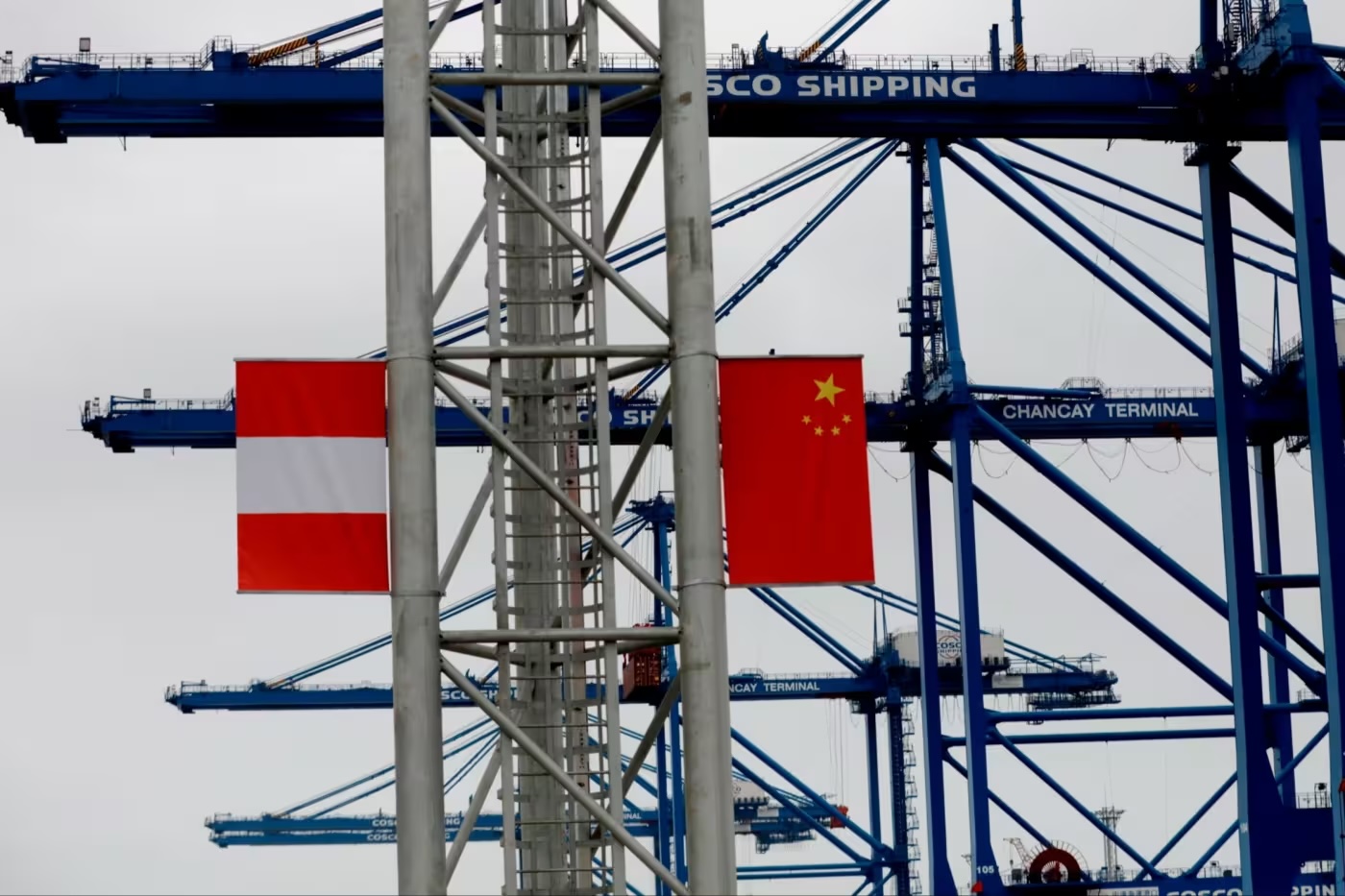Chinas New Megaport In Peru Set To Reshape Trade

The Port of Chancay, a massive Chinese-funded project on Peru’s Pacific coast, is poised to revolutionise trade in South America. Built by Cosco Shipping in partnership with Peruvian miner Volcan, the $3.6bn deepwater port officially opens this week, promising to position Peru as a major hub for exports to Asia.
A Monument to Chinese Influence
The port is unmistakably a product of Chinese engineering and technology. ZPMC automated cranes line the docks, BYD trucks are ready to ferry staff, and Huawei 5G towers power its operations. Mario de las Casas, public affairs manager for Cosco Shipping, calls the port a “transformational opportunity” for the region. “This isn’t just about Peru. It’s a win for all of South America,” he says.
The deepwater facility can handle the world’s largest vessels, offering a faster, more direct route for Peruvian goods like copper and agricultural products to Asian markets. Officials describe Chancay as South America’s answer to Singapore, but not everyone is convinced of the benefits.
Concerns Over Sovereignty
Critics argue the port gives Beijing disproportionate influence in Peru’s affairs. Earlier this year, lawmakers granted Cosco exclusive rights to operate Chancay, a decision described by some as a blow to Peru’s control over its own infrastructure.
Evan Ellis, a Latin America expert at the US Army War College, warns of risks tied to Chinese dominance. “Peru may not fully benefit from its resources and location. Instead, those rewards might flow to China,” he says.
The United States has also expressed concerns. With Washington wary of China’s expanding footprint in Latin America, the port’s potential use by Chinese naval vessels is seen as a security risk. This issue is likely to gain attention under US president-elect Donald Trump, who has promised tougher policies on China.
Strategic Shifts in Trade
Chancay is set to cut shipping times between Peru and China by at least 10 days, eliminating stopovers at ports in Mexico or California. Even Brazil, whose exports to Asia often pass through the Panama Canal, stands to benefit from the new route.
Peru recently passed a cabotage law allowing goods to move between its ports by sea, cutting down on road transport. Cosco has outlined plans for small vessels from neighbouring countries like Chile and Ecuador to ship goods to Chancay for export, making the port a regional trade hub.
Chancay is also part of China’s broader Belt and Road Initiative, which has made Peru a focal point for investment. Other Chinese projects include the Las Bambas copper mine, Lima’s electricity grid, and another port under construction in southern Peru. Meanwhile, the US has largely been absent from major infrastructure deals in the country.
Domestic Tensions
Despite its economic promise, Chancay has sparked controversy at home. Residents in the once-quiet fishing town have complained about noise and environmental damage. Cosco has tried to mitigate these concerns by building a nearly 2km tunnel to reroute port traffic away from the town, but discontent remains.
There are also disputes over tax breaks proposed for a business park near the port, where Chinese electric vehicle maker BYD is considering setting up an assembly plant. Critics argue these incentives could undermine competition from Peru’s state-owned port at Callao, just 73km away. “Chancay is already attractive. Tax breaks only create unfair competition,” says opposition congresswoman Adriana Tudela.
Strategic Risks and Opportunities
General Laura Richardson, formerly head of US Southern Command, has warned that Chinese infrastructure projects like Chancay often serve dual purposes, including military use. Alfredo Thorne, a former Peruvian finance minister, notes that Chinese investments bring economic benefits but could complicate relations with the US, particularly under Trump.
“Trump’s protectionist policies might force Peru to pick sides,” says Thorne. He questions whether China will continue to bet on Peru if the US escalates its rivalry with Beijing. Trump has already floated the idea of a 60% tariff on Chinese goods, raising the stakes for all involved.
Future of South American Trade
Chancay is initially expected to handle up to 1.5 million TEUs (twenty-foot equivalent units) a year, alongside 6 million tonnes of loose cargo. Its eventual capacity of 3.5 million TEUs will rival Callao, but both ports remain far behind major global hubs. Latin America’s ports lag significantly, with Asia, North America, and Europe boasting multiple facilities handling over 10 million TEUs annually.
As the port prepares to open, its role in reshaping South America’s trade landscape is undeniable. However, balancing the economic benefits of Chinese investment with the risks to sovereignty and relations with the US will be Peru’s challenge. Whether Chancay becomes a beacon of progress or a geopolitical flashpoint remains to be seen.
Apple's $99M Bet On Green China
Apple Inc. has unveiled a new $99 million renewable energy fund dedicated to expanding clean energy production in China.... Read more
Meta's $1 Billion EU Privacy Gamble
Meta Platforms, the parent company behind Facebook and Instagram, is confronting an unprecedented regulatory challenge i... Read more
Trump's Auto Tariffs Ignite Economic Storm
In a bold move escalating global trade tensions, President Donald Trump announced a substantial 25% tariff on all import... Read more
Forever 21: Fashion Giant Falls Again
Forever 21, the iconic American fashion retailer, has filed for bankruptcy protection for the second time in just six ye... Read more
Klarnas IPO: Revolution Or Risky Gamble?
Swedish fintech giant Klarna has officially filed for its highly anticipated Initial Public Offering (IPO) on the New Yo... Read more
US Consumer Spending: A Looming Crisis
Major US companies, including retail giant Walmart and airline powerhouse Delta Air Lines, have issued stark warnings ab... Read more

